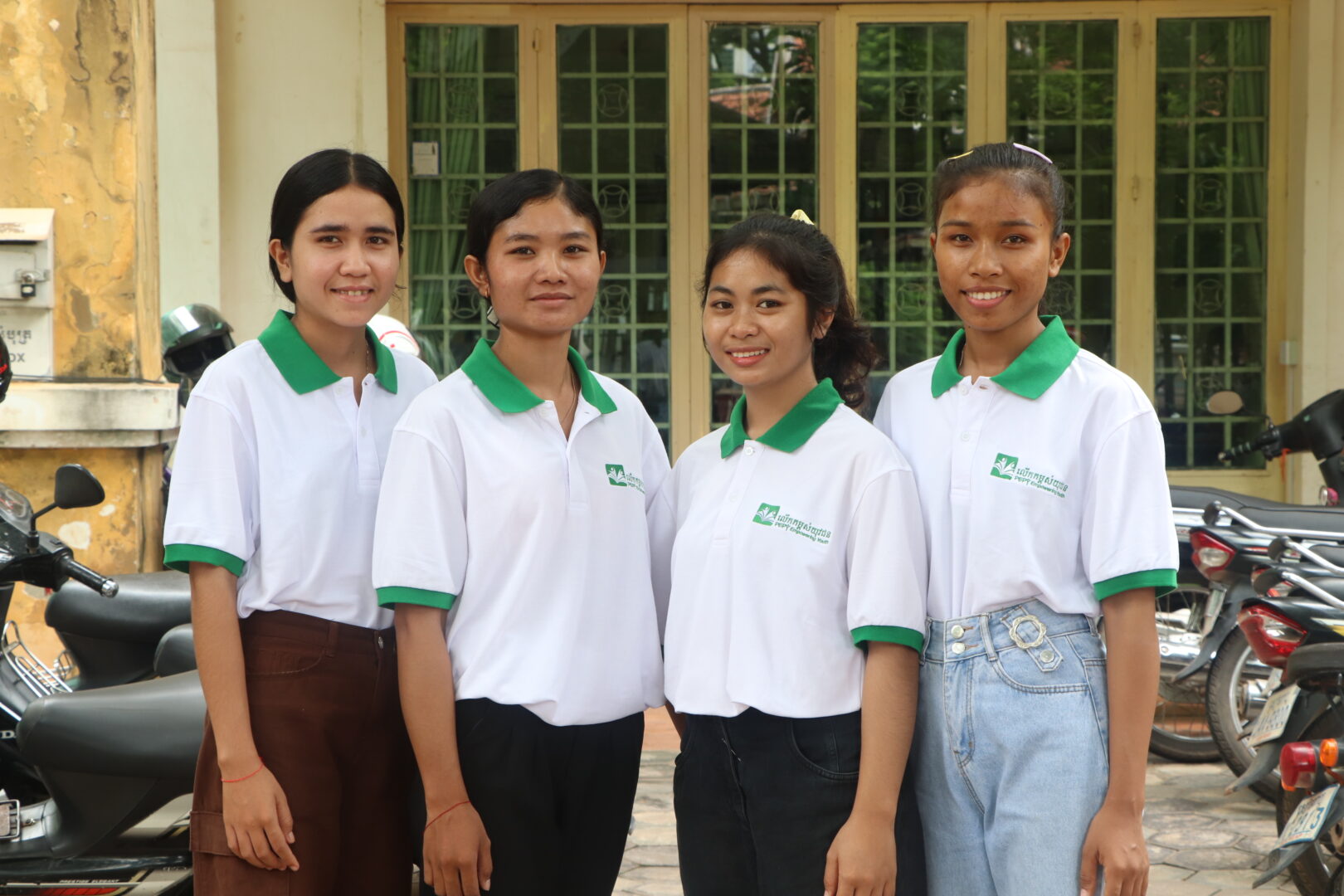PEPY visits the Angkor Centre for Conservation of Biodiversity
February 18, 2009Testimonial from past participant Veronique
February 24, 2009Small Differences, Big Changes — Child-to-Child Training
Yesterday I was chatting online with a Cambodian friend, and former PEPY employee now working in the Ministry of Education. Our work is frustrating, he said. We work everyday and night, and there is so little to show for it. The differences we see are small.
He is right — the differences we see are often small, and sometimes discouraging for all the effort we put into our programs. But creating sustainable and large-scale change can certainly happen through only small moves. Encouraging children in a village to wash their hands before eating and after using the bathroom for example can have a tremendous impact on village health, and therefore livelihoods, even if its not something we immediately see. PEPY’s Child-to-Child program is all about small differences and big changes. Encouraging children to learn about and create action on hygiene, health, simple environmental topics, and social issues in their own lives might lead to only relatively small differences in their lives, but we expect those differences to lead to much larger changes. In the eight months since this program started, we’ve seen the beginnings of those changes.
This week, we are trying to push this program towards a new level by offering a week-long training with our Child-to-Child team on how to make their Child Clubs more participatory and child-driven. Led by an international trainer from the Child-to-Child Trust in the UK, this week’s program aimed at giving our facilitators the tools and knowledge to create the small changes in our clubs that will make them more effective.
Though the 14 participants joining from Chanleas Dai have already been through a local training, for many of them the participatory style of this week’s training was eye-opening. For six days we talked about what child participation means, the difference between activities and active-learning, and what strategies we can use to ensure that our clubs are truly moving towards child empowerment, as opposed to merely being adult-led clubs for children. These concepts are hard for most of us, as they require giving up power as adults and stepping out more often than stepping in. The concept is especially challenging for our facilitators to grasp, coming from an environment where child-centered learning is still rare.
One of the ideas that participants found the most interesting was what Child-to-Child terms the “Ladder of Participation”. The Ladder represents the different ways that children are involved in educational/development programs, ranging from manipulation and tokenism, to adult-directed participatory activities, and finally to child-initiated, child-led problem solving. At the beginning of the training, we asked our team where they thought our programs were on this ladder. They all pointed to the top rungs of the ladder.
Much of this training has been about breaking down that perception, and encouraging our staff to recognize where we can be stronger, where we need less adult direction and more child-driven learning, and how much further we have to go to reach the top rungs of the ladder. As our trainer noted, much of a successful training is breaking down participants so that they realize how much more they have to learn. On Day Four, we asked about the ladder again, and as a group recognized that we were much closer to the bottom of the rungs than the top.
The recognition that we can be better as individuals and as a team is important to capacity building. Though everyone here wants to learn, it is difficult to encourage self and peer criticism, the first step in building our own capacity. Some staff are concerned about losing their jobs if their performance is low. Others simply do not have a model of what the top looks like and therefore cannot conceptualize the constructive criticism needed to help us improve. Feedback, self-evaluation, and constructive criticism, concepts that I have grown up with since primary school, are not practiced in Khmer schools.
It has taken a week, countless activities, group work, modeling, examples with mock child clubs, and more then a little prodding to reach a point where our participants understand how to make our own clubs more participatory and child-friendly. The changes are small: sitting on the floor instead of presenting standing up, encouraging girls and boys to participate equally, letting children come up with the ideas and questions themselves, being quiet and stepping out more often, creating activities where children think instead of observe.
More important than these changes though, are the individual changes I am seeing: our educators giving constructive criticism, helping each other through suggestion, and brainstorming how we can improve our clubs. By opening their critical eyes I hope we will see not only small changes in their own behavior, but also a ripple effect within the child clubs.



